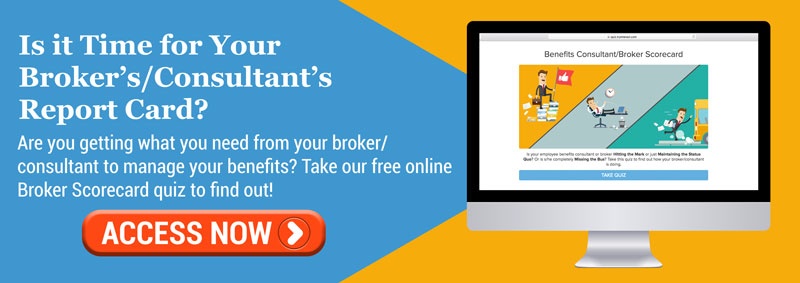There are good surprises – finding $5 in your jeans, winning the lottery, and hearing from an old friend. And then there are bad surprises – breaking your leg, getting into a fender bender, and finding out your health insurance renewal is increasing by 25%. Ouch!
You should have a pretty clear idea what your health insurance renewal is going to be before you even receive it. And if the final numbers are a surprise, then your broker/consultant doesn’t have a good pulse of how your health plan is running.
Analytics
Does your broker/consultant provide you with analytics, data, or reporting on how your health insurance plan is doing? Analytics can give you a good sense of where your health plan has been and where it’s going, so to speak. When analytics are performed, your broker/consultant looks at past renewals, claims, and may execute a claim analysis. A claim analysis takes a look at:
- Comparing actual claims to projected claims
- Establish medical and Rx benchmarks and trends
- Determine what you are paying in administrative costs
- If you are in an insurance buying pool, co-op, or consortium, your broker will estimate to what extent you are subsidizing or receiving a subsidy from that pool
Your broker/consultant can proactively run analytics months prior to your renewal, predict the increase, and work with your carrier to provide appropriate pricing. If needed, they can take you out to bid.
Negotiating
Did you know that you are able to negotiate your renewal before your insurance carrier gives you the final verdict? All the analytical data your broker/consultant provides gives you leverage with your insurance carrier about how your group is running and if the projected renewal is fair or high.
Running analytics, approximately six months prior to your renewal, can give your broker/consultant time to have a conversation with the carrier, look into making some plan design changes, or take you out to bid. If you wait until its renewal time and then you think the carrier’s renewal is unfair, you’re out of time to providing support documentation, plead your case, etc.
Here are some examples of how analytics and negotiating have saved money for schools, cities, and counties.
- High Renewal Erased: A Michigan school district was unhappy with their broker/consultant. They had a self-funded plan but the broker/consultant had not provided any analytics, data, or reports on how their plan was running and what they could do to mitigate costs. When a new broker/consultant took over, they were proactive and shopped the stop loss in anticipation of the renewal. They were able to find pricing below the current premium. The renewal came in at 8.6%. They leveraged the market information as well as their data analytics to negotiate with the current stop loss carrier. When all was said and done, the carrier gave the district a pass (no increase) as well as a $20,000 refund.
- Separating and Self-Funding the Rx Plan: A Michigan school district had high prescription costs. To save money, their broker/consultant separated their Rx plan from their medical plan, transitioning it into a self-funded plan with a Pharmacy Benefit Manager (PBM). The broker/consultant added a stop-loss policy to protect the district’s fiduciary responsibility. This change saved them over $60,000 in the first year.
- Eliminating Expensive Unused Benefit: Prior to renewal, a Minnesota school district's broker/agent identified an expensive, antiquated, and rarely-used pharmacy benefit that impacted less than 0.5% of the total members. Eliminating this benefit resulted in a total plan savings of 2.5% or approximately $250,000.
- Transition From Fully-Insured to Self-Insured: A large Minnesota school district was considering making the move towards becoming self-insured. The broker/consultant presented to each bargaining unit (over 30 meetings) illustrating and highlighting the advantages of self-insurance over their fully-insured plan. This education resulted in a $1.5 million initial plan savings as compared to the other offerings.
- $57,000 Savings from Waiver Removal: During their routine benefit plan evaluation, the broker/consultant discovered that the Wisconsin school district had “double coverage” on a benefit called waiver of premium. The benefit allowed those out on disability to waive the health insurance premium while they are out of work. The broker/consultant found that there was also a similar benefit on their disability insurance plan. The decision was made to remove the benefit on the health plan, keeping the disability plan intact, and the savings was $57,000 in the first year for the district.
Contact your Benefit Consultant for more information about claim analysis, analytics, and renewals.
National Insurance Services is not a law firm and no opinion, suggestion, or recommendation of the firm or its employees shall constitute legal advice. Readers are advised to consult with their own attorney for a determination of their legal rights, responsibilities and liabilities, including the interpretation of any statute or regulation, or its application to the readers’ business activities.







